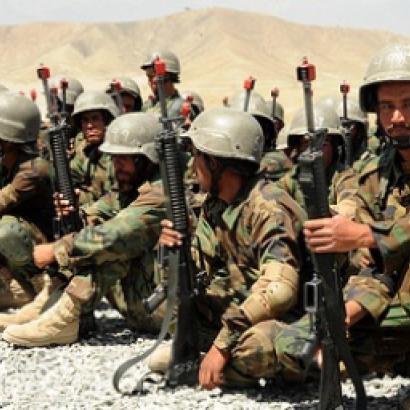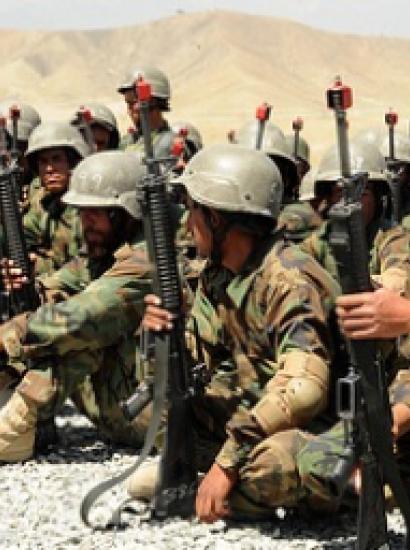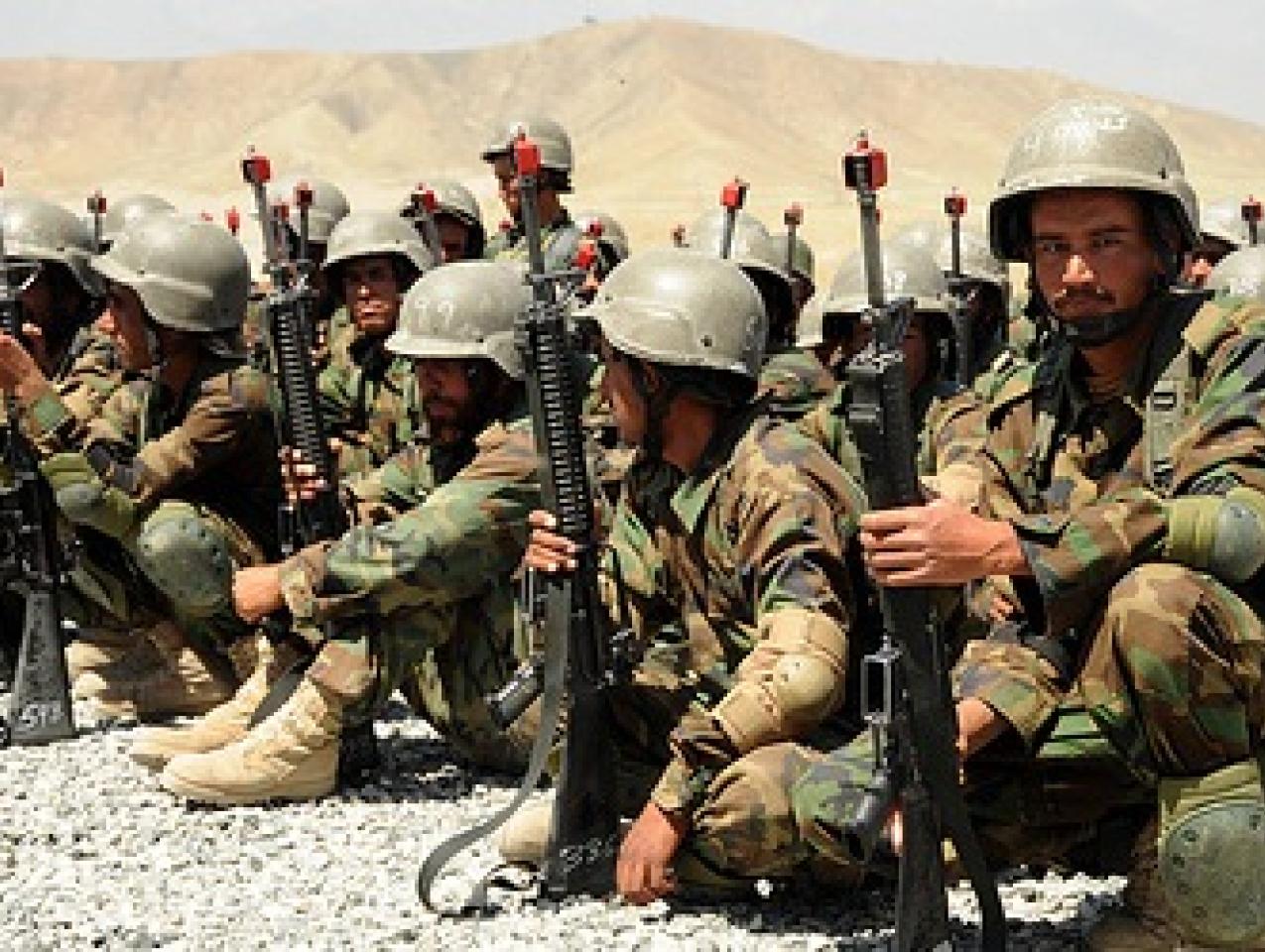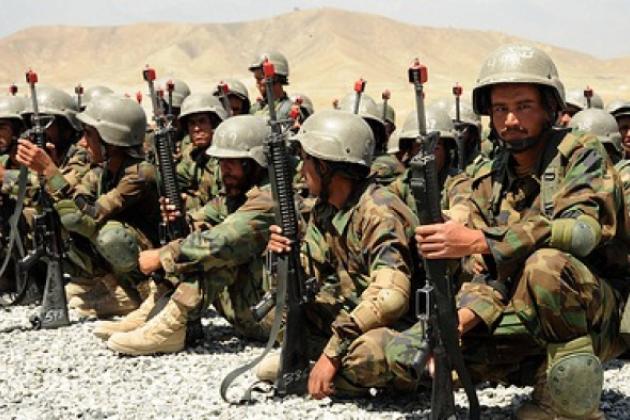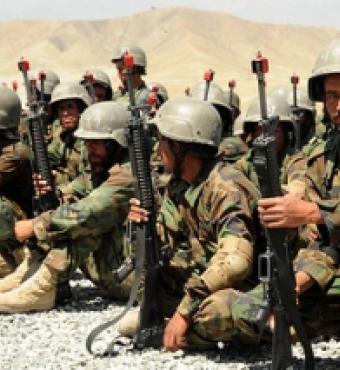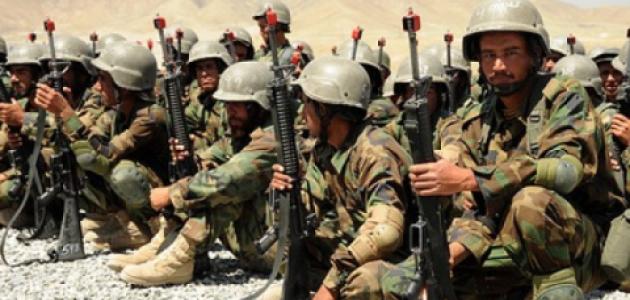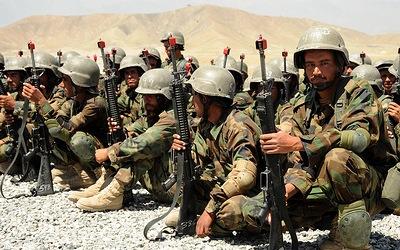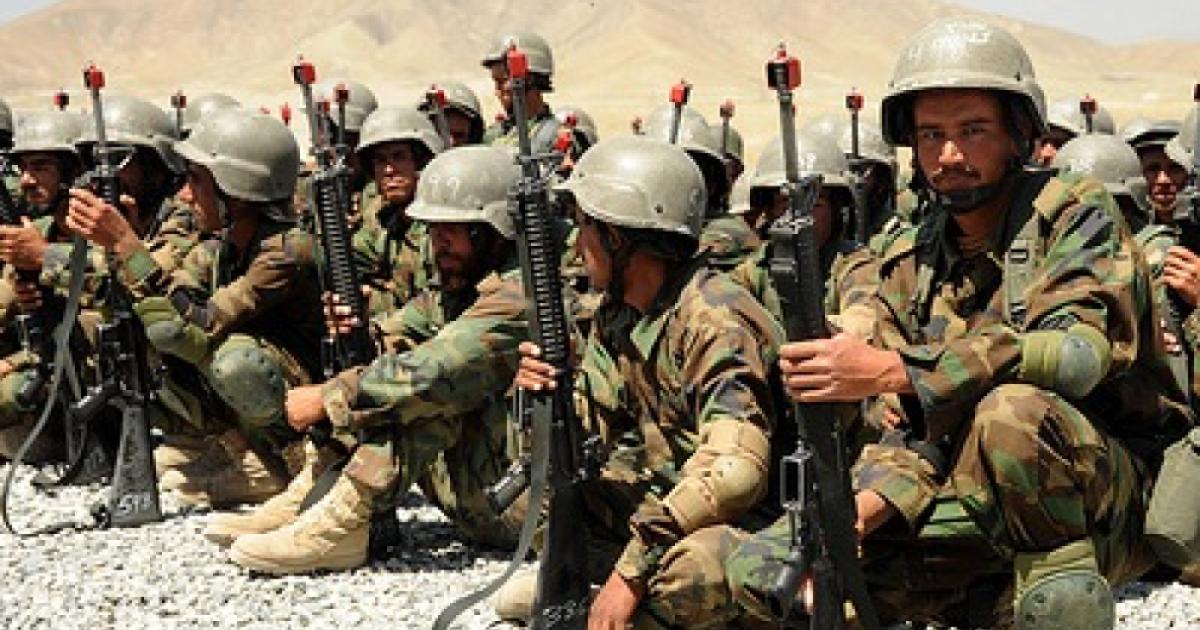Over the past five decades, the United States has adapted its international counterterrorist response many times in an effort to deter, preempt, or combat the changing terrorist threat. The results have been mixed. Now, in the shadow of withdrawals from Iraq and Afghanistan by the end of 2014, America is switching to another geopolitical game plan. Its nascent global counterterrorism strategy rests on a tripod of airstrikes, commando raids, and partner-building initiatives to deal with the metastasizing threat from al Qaeda-inspired movements in the Middle East and Africa.
This emerging counterterrorism blueprint sets out to avoid future interventions and occupations as in Afghanistan and Iraq. But its three component parts are not comprehensive enough to turn the tide of a surging Islamist current. Nor are they even being applied in Syria, where al Qaeda affiliates are entrenching themselves. The Obama administration has simply abandoned the Levantine country to Islamist terrorists.
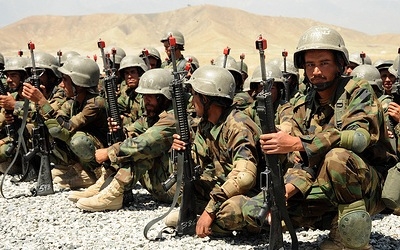
Photo credit: isafmedia
Past U.S. counterterrorism strategies have included diplomacy at the United Nations and cooperation with other powers. Washington has gone from economic sanctions, to cruise missile firings, to large-scale military actions within Afghanistan and Iraq. Knowledge of this lengthy and checkered trajectory should induce caution about the capability of any limited program to turn back the historical tide that seemingly gathers more momentum with the passage of time.
The Counterterrorism Tripod
Seeking to stay clear of costly ground interventions, Washington has banked heavily on a three-pronged offensive along with a defensive net cast by the National Security Agency’s electronic eavesdropping. This triad encompasses: (1) armed and surveillance drones; (2) commando attacks; and (3) partnerships with local forces. Each of these offensive tactics is to battle terrorist movements far from American shores. The strength and shortcomings each warrant brief attention before evaluating the overall strategy.
Remotely piloted aircraft, or drones, have become America’s weapon of choice against terrorist cadres especially in difficult to access terrain. To date, there have been some 440 airstrikes against suspected terrorists in Yemen, Somalia, and mostly Pakistan since 2002. Of the estimated 3,000 killed by missiles, a small fraction of innocent bystanders have also died. Compared to World War II carpet bombings of German and Japanese cities where tens of thousands perished, the targeted lethality and precision of drones leads to far less casualties.
Air-fired missiles on Taliban havens along Pakistan’s border with Afghanistan have helped to lessen the advantage of cross-frontier sanctuaries for the Afghan insurgents. In past insurgencies, such as in Vietnam, the guerrillas enjoyed a measure of safety by withdrawing to bases in Laos and Cambodia out of reach of sustained American bombardment. Today’s Taliban fighters can run into Pakistan but they cannot hide from the ubiquitous drone flights that track and bomb them in their safe havens.
Unlike conventionally piloted warplanes, drones can loiter for hours over a potential target transmitting back to their bases live video feeds for assessment before the remote pilots press the kill buttons. If drones fall from the sky either from enemy fire or mechanical failure, obviously a pilot’s life is not at risk. Thus, there are several advantages to drone warfare over conventional aircraft bombings.
Commando Raids
Commando raids constitute another form of U.S. direct-action warfare against jihadis. Special Operations Forces excel at in-and-out attacks on terrorist-insurgents but regular military forces also conduct these raiding-type missions. The high-profile Navy SEAL raid to neutralize Osama bin Laden differed in execution from countless other such operations only in that it killed the terrorist mastermind and took place within Pakistan. Otherwise, the famed operation was nearly routine.
Beyond the Iraqi and Afghan theaters, isolated commando raids have taken place within Somalia, Libya, and Pakistan. Like drone operations, these small-unit assaults are staged to kill adversaries and to gather intelligence. One advantage over airstrikes enjoyed by ground attacks lies in their ability to capture terrorists, who can be interrogated for intelligence. Additionally, the raiders scoop up computers, flash drives, and “pocket litter”—notes and phone numbers on scraps of paper found on militants.
The U.S. violation of Pakistani sovereignty to take down bin Laden generated a firestorm of acrimony from Islamabad against America that lasted for months before dissipating. The frequent breaches of Pakistani airspace by drone airstrikes also stir outcries from time to time but nothing on scale of the May 2011 attack on the arch-terrorist in Abbottabad. The airstrike-death of Hakimullah Mehsud, a Pakistani Taliban emir, this fall reignited anti-American passions in the northwest province of Khyber-Pakhtunkhwa. A provincial assembly threatened to block NATO convoys through its territory unless the United States suspends its drone firings
Most special operations raids have taken place in the active war zones of Iraq and Afghanistan. Thus, they are lumped in with other combat operations. The Afghan night raids, however, stirred local resentment. President Hamid Karzai has frequently raged against the violation of Islamic taboos by coalition soldiers invading the privacy of women in their homes in search of arms and militants during the dead of night. General Stanley McChrystal recounts in his book My Share of the Task how the military ramped up raids in Afghanistan from 18 per month in 2004 to 300 per month two years later. These offensive actions kept the insurgents off balance, inhibiting their ability to plan and execute attacks on the U.S.-led coalition forces.
The Indirect Approach
The third leg of the ascending counterterrorism strategy is perhaps the most tricky to implement. Whereas the two other approaches rely on the direct application of U.S. military power, the third approach depends on allies and partners. It involves American face-to-face training and arming of indigenous forces in other lands to attack, capture, and generally battle their local terrorist-insurgent foes. Partnering with others has been a staple of the American way of war throughout the country’s history. The objective is to impart martial skills and weaponry to local forces, who, in turn, lend their knowledge of terrain, language, and culture to their American benefactor. Since the 9/11 terrorist attacks, this course of action has been applied repeatedly.
In Iraq, the U.S. Army and Marines partnered with the Sunni Awakening movement to beat back the al Qaeda in Iraq network. Before that alliance, al Qaeda in Iraq’s shooters, bombers, and beheaders engulfed the Persian Gulf nation in a widening sea of bloodshed until being contained by the joint U.S.-Sunni partnership. The Sunni sheiks brought over their militias to the Coalition side to fight against the al Qaeda in Iraq movement. American forces also enrolled some 100,000 Iraqis, mostly Sunni, in the Sons of Iraq, a volunteer army that was trained, armed, and paid for by the United States. Together, Iraqi, American, and other Coalition troops put a lid on the terrorist inferno by late 2008.
In Afghanistan, the special ops and regular forces have stood up an Afghan National Army along with both a national and village-level police force. In Somalia, the United States looked to neighboring states (Kenya, Burundi, and Uganda among others) for military units that are overseen by the African Union and the United Nations in the battle against al Shabaab militias. Within other African countries, small numbers of Special Operations Forces and regular U.S. military troops are engaged in mentoring, arming, and guiding the local soldiery in counterinsurgency tactics. Their missions include policing vast interior stretches to preempt terrorist activities. Where terrorists have already struck, the American-trained African armies are to engage them using proper counterinsurgency principles so as not forfeit villagers’ support against the jihadi insurgents. The larger mission is to deny the militants the control of territory for bases from which to perpetrate violence against locals and the West.
The logic of the emerging global counterterrorism strategy is enticing. It seeks to sidestep the big land invasions and nation-building schemes that are expensive in blood and treasure. Its purpose is to deal with terrorism far from American and Western lands. It aims to spare American casualties by depending on host-nations’ manpower in what is, in reality, their war anyway. As a by-product of the indirect approach, the United States endeavors to form up non-Western armies in the West’s civic tradition of military subordination to civilian rule, of honorable and honest service, and of repositories of their respective national trust.
In many non-Western nations, these secondary goals are a very tall order. In fact, the security forces have histories of corruption, abuse, and neglect of their civilian populations. Although this strategy has merits, it faces formidable challenges in its implementation and, critically, in its overall prospects for success.
Operational Hurdles
- While drone strikes enjoy high approval among Americans, usually above 65 percent in most polls, these air bombardments are criticized and contested by Amnesty International, Human Rights Watch, and the American Civil Liberties Union. These groups and other critics contend that the airstrikes are a form of extra-judicial murder. They are especially aggrieved, when drone strikes kill American citizens, such as the New Mexico-born Anwar al-Awlaki, who was neither formally charged nor tried in a court of law for his crimes but perished in a 2011 drone attack. They also argue that too many innocent civilians are killed in missile blasts. President Obama benefits from a Nixon-goes-to-China paradox, because he is a liberal Commander-in-Chief. So criticism is less harsh and much less reported than it would be were he a Republican. His Noble Peace prize and pre-election anti-war stance have also shielded him. But Obama has still reduced the number of drone strikes over the past two years as a bow to elite liberal opinion. This is not a sound basis for counterterrorism policy.
- Internationally, the drone program has also drawn a fierce backlash, particularly in Pakistan and Yemen, which have endured repeated missile strikes, some of which killed innocent bystanders. These factors also played into the Obama administration’s decision to scale back the number of drone bombings during the last two years. So, the drone attack may lose its effectiveness along with its decreased use. America’s terrorist enemies will certainly take advantage of any lulls in the aerial bombings.
- But the chief shortcoming of drone operations lies in the fact that they are a tactic; drone strikes, even along with commando raids, do not deny the Islamists the use of territory for recruitment, training, or raising funds. The strikes have been very effective in killing terrorist leaders. But drone missiles have not halted the insurgents’ infiltration into new areas.
- More broadly, the three-pronged counterterrorism strategy fails to confront the ideological challenge posed by al Qaeda and related groups. Admittedly, the United States and the West are disadvantaged in these pursuits, because they are, by definition, infidels. They are unable alone to mount an effective ideological counter narrative. Islam itself is part of the societal fabric in many at-risk countries. During the Cold War era, the United States propounded a doctrine of liberty and democracy to the subject peoples living under Soviet-imposed communism in Eastern Europe and elsewhere. Today’s fight is a nuanced contest against the severity of some Islamic strictures, not the religion itself.
- Moreover the United States’ near-total disengagement from the Syria conflict left a political vacuum that al Qaeda-linked Salafi jihadi groups are filling. Should these radical movements succeed in consolidating mini-states in a partitioned Syria, they will assuredly use them for launching pads to assault the West and Israel.
The evolving global counterterrorism strategy is a necessary but not a sufficient step toward halting the expanding terrorist threat from Africa and the Middle East. It will help tamp down insurgencies. But it will not eliminate them altogether. Nor will it get at the many roots of the contagion. A more comprehensive counter-strategy is needed to halt the spillover of Salafi jihadism from current hotspots into other territories.
Some have advocated a Marshall Plan to counter Islamic radicalism; it would deal with the economic backwardness, poverty, and bleak financial prospects facing young men in the Islamic world. The Arab Middle East’s human capital does need education and training in marketable skills. Although some Western resources could be useful, vast financial expenditures to spade out these supposed root causes of radicalism are unlikely to resolve the economic underdevelopment in the Middle East and Africa. The example of widespread corruption, waste, and ineffectiveness of American infrastructure constructions and political development in Iraq and Afghanistan exercises formidable restraints on a reprise of such efforts elsewhere in the region and beyond.
Additionally, some countries within the afflicted lands have rich deposits of oil and mineral wealth. Their authoritarian governments constitute a historic impediment to economic betterment and genuine consensual government because of their toxic mix of anti-democratic values, endemic corruption, and espousal of doctrines that draw on terrorism and totalitarian models.
The ideological source of Islamic militancy demands concentrated attention. Addressing the need for de-radicalizing Islamists constitutes a major challenge to the West and to the Islamic world itself. But other countries have shown the way. Saudi Arabia and Indonesia have taken steps to emphasize more moderate forms of Islamic preaching among their clergy so as to de-emphasize the Salafist teachings that lead to terrorism and violence. Similarly, Morocco’s King Mohamed VI offered to help Mali to train some 500 of its Imams in a moderate form of Islam.
Along with staunching the extremist tide flowing through the Islamic world with a milder, more tolerant Islam is the crucial need to dry up funding for radical movements like al Qaeda, al Shabaab, the Nursa Front, the Islamic State of Iraq and Syria, and other groups. These funds flow mostly from sympathetic or frightened sources in one of the seven desert kingdoms in the Arabian Peninsula.
Another issue is the need for more U.S. and NATO forces on the ground. Without competent soldiers on the ground, the local armies may not be able to cope. Confronted with the reality of inadequate numbers of professional soldiers to secure parts of Mali, France decided to maintain troops in that country beyond its intended exit date. Across the continent in Somalia, foreign forces from neighboring states have been responsible for most of the fragile stability reached so far in the failing state. Indeed, the United Nations has called for an additional 4,000 troops to bolster the already 12,000 soldiers from Kenya, Uganda, Burundi and other nations.
More troops need not signal the first step on a “slippery slope” leading to large-scale intervention as happened during the Vietnam War or the surges in Iraq and Afghanistan. But without a sufficient footprint, the battlefield is simply surrendered as happened in post-invasion Afghanistan or present-day Syria, allowing terrorist groups to take root, flourish, and then strike out violently.








